The iron condor is a tried-and-true options trading strategy that reduces risks while offering a fair amount of upside potential.
Iron condor strategies work best when the stock trades in a tight, predictable range.
This strategy involves selling one out-of-the-money put and one out-of-the-money call while simultaneously buying a further out-of-the-money put and call, all with the same expiration date.
The result is a net credit, which represents the maximum profit if the underlying asset’s price remains within the inner strike prices at expiration.
This guide reveals 11 of the best iron condor stocks that you can use for this set up in 2025 and beyond.
TL;DR: Best Iron Condor Stocks (Quick Overview)
A quick snapshot:
- Microsoft Corporation (NASDAQ: MSFT) – Steady cloud powerhouse
- Alphabet Inc. (NASDAQ: GOOGL) – Search‑driven stability
- Intel Corporation (NASDAQ: INTC) – Chipmaker with rangebound behavior
- Walmart Inc. (NYSE: WMT) – Defensive retail stalwart
- Eli Lilly and Company (NYSE: LLY) – Pharma growth yet stable range
- UnitedHealth Group Incorporated (NYSE: UNH) – Healthcare titan with predictable swings
- Molson Coors Beverage Company (NYSE: TAP) – Beverage mid‑cap, low noise
- McDonald’s Corporation (NYSE: MCD) – Consumer staple with tight range
- AT&T Inc. (NYSE: T) – Affordable, low‑volatility telecom
- Johnson & Johnson (NYSE: JNJ) – Resilient healthcare giant
- Procter & Gamble Co. (NYSE: PG) – Slow‑moving consumer essential
Best Iron Condor Stocks To Add To Your Watchlist
Microsoft Corporation (NASDAQ: MSFT)
Overview
Let’s talk about why Microsoft is such a popular choice for folks trading iron condors. Rather than swinging wildly on speculation, it tends to move in measured waves, especially when it’s not near an earnings release.

Plus, liquidity in Microsoft options is off the charts, and getting in and out is smooth.
The tight spreads you get entering the condor versus the potential slippage of thinner names make a real difference in trade execution.
Growth Catalysts
Behind that steady behavior is real business strength.
Think Azure, enterprise software, and AI integration like Copilot, all of which keep revenues growing consistently.
That typically means explosive surges, but enough upward momentum to keep it grounded. It doesn’t flip‑flop for no reason.
Its diversification across sectors and products lends it predictability.
That consistency is gold for folks looking for premiums that won’t vanish in a single news release.
Risks
Of course, no stock is foolproof. Big macro shifts or unexpected guidance could still cause a sudden swing, especially around earnings.
And while such moves happen less compared to high‑flyers, they can spoil a perfectly good condor. That’s why timing matters.
Ideally, you avoid entering right before earnings or major product announcements. Stay alert, and you can keep surprises from messing up your wings.
Conclusion
If steady, liquid, and predictable is your style, this is a nice match.
Microsoft blends dependable fundamentals with range‑bound behavior, ideal conditions for rolling out iron condors with confidence.
Alphabet Inc. (NASDAQ: GOOGL)
Overview
When you think of reliable range‑bound stocks, Alphabet often pops to mind. Its search engine, YouTube, and cloud businesses bring predictability.
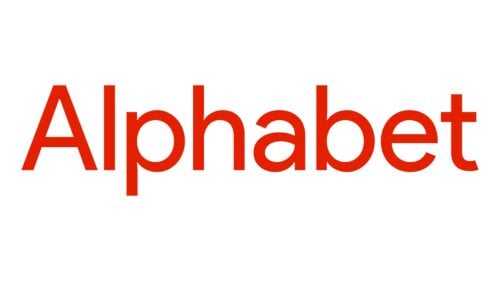
What’s truly helpful is the depth of its options market. You won’t notice any liquidity hiccups when selling spreads.
That makes rolling or adjusting trades feel smoother. Overall, Alphabet’s combination of business stability and reliable options activity makes it a go‑to for income traders who value consistency.
Growth Catalysts
Behind that predictable range lies real momentum. Advertising still fuels revenue the most, but AI, cloud, and YouTube offer substantial help.
A growing backlog in cloud services shows demand isn’t slowing. Alphabet’s footprint in digital experiences like Maps and YouTube adds diversification.
That means single‑industry shocks tend to get cushioned, and price tends to move in response rather than on impulse.
All that steadiness is exactly what you need when you’re running iron condors and paying attention to time decay.
Risks
Nothing is risk‑free. The antitrust cloud over Alphabet has been gathering.
There’s talk of forced remedies like spinning off Chrome. Such an event could trigger a sharp slide, think double‑digit losses.
That’s not common, but odd legal decisions can overturn even well‑planned trades. Plus, earnings can surprise occasionally, especially around ad spending shifts.
A good approach: keep trades outside earnings and stay alert for court‑related news or surprises.
Conclusion
If you’re after a stock that balances range stability, solid option volume, and manageable volatility, this fits nicely.
Just stay cautious around legal or earnings events, but when you get your timing right, Alphabet can be a dependable condor play.
Intel Corporation (NASDAQ: INTC)
Overview
Let’s be real, Intel does not leap around like a tech high-flier.
It tends to trade in a defined channel, making it perfect for strategies that want the price to stay put. That predictability is gold to iron condor traders.
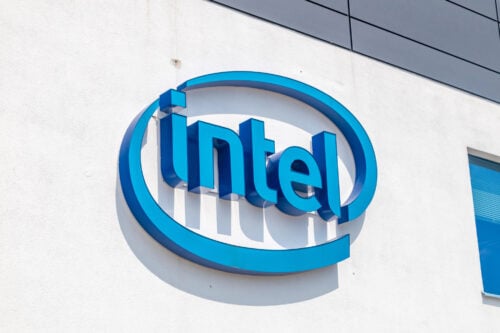
Overall, the stock’s cadence is steady, letting time decay do its job, especially when you’re tucked between your short strikes.
Growth Catalysts
Turning heads in its favor are government incentives for chipmaking and a renewed push toward domestic foundry services.
Moore’s law may have slowed, but demand for AI and enterprise chips is heating up.
Add its expanding reach into automotive and infrastructure, where its manufacturing muscle matters, and you get a company with tailwinds that don’t necessarily disrupt the trading range.
It’s the kind of quiet, industrial-strength momentum iron condor traders love.
Risks
Nothing’s guaranteed. Supply chain hiccups, execution missteps, or failed new launches could knock the stock out of its groove.
And when earnings or guidance surprise, especially in this competitive sector, the price can rebound fast.
The trick is timing your entry away from those periods and giving yourself some room to adjust if needed.
Conclusion
For those who like structured trades with a sideways bias, Intel hits the mark.
It blends industrial heft, reliable behavior, and fair option pricing.
Keep an eye on catalysts and manage around earnings, and you’ll find it a practical, income-friendly name for iron condors.
Walmart Inc. (NYSE: WMT)
Overview
If you’re looking for a stock that keeps things chill, Walmart fits the bill.
Its movements feel leisurely compared to tech names, which is perfect for iron condor setups.
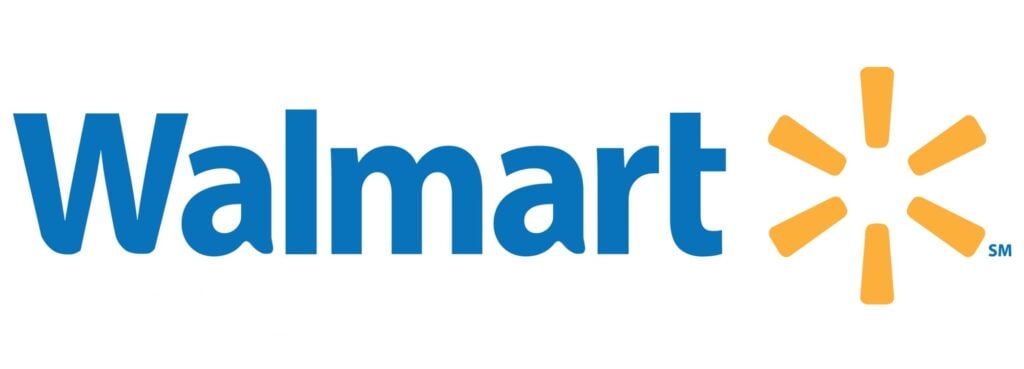
When selling spreads, that predictable pattern means you can let time decay work its magic without watching the underlying value explode past your strikes.
And nothing says option liquidity like Walmart, as it’s one of the most traded names out there.
Execution stays crisp, and that tight bid‑ask spread turns into smoother trade management.
Growth Catalysts
Food and everyday essentials keep customers coming back, which makes its revenue surprisingly stable.
Add to that growing e‑commerce efforts and a knack for balancing store count with digital growth, and you’ve got predictability in spades.
When its fundamentals look this rock solid, it supports a sideways price path within well‑known boundaries.
That’s the kind of behavior iron condor traders really respect. No overreactions, just quiet accumulation.
Risks
Even the calmest names can throw curveballs.
Shifts in consumer sentiment, inflation surprises, or cost pressures from fuel and logistics can stretch the range temporarily.
It doesn’t often break into freefall, but it can drift. Watching your short strikes and being ready to adjust or exit if momentum builds is a smart move.
Avoid entering near earnings, where even predictable names can hiccup.
Conclusion
Looking for range-bound security with dependable liquidity? Walmart delivers.
It doesn’t surprise, it moves in a frame, and its options offer a predictable yield. These factors make Walmart a great name for working iron condors with peace of mind.
Eli Lilly and Company (NYSE: LLY)
Overview
Eli Lilly often feels like the composed guest at a party; it doesn’t dominate the room but commands attention through consistent presence.
That’s exactly what makes it a solid pick for iron condor strategies.
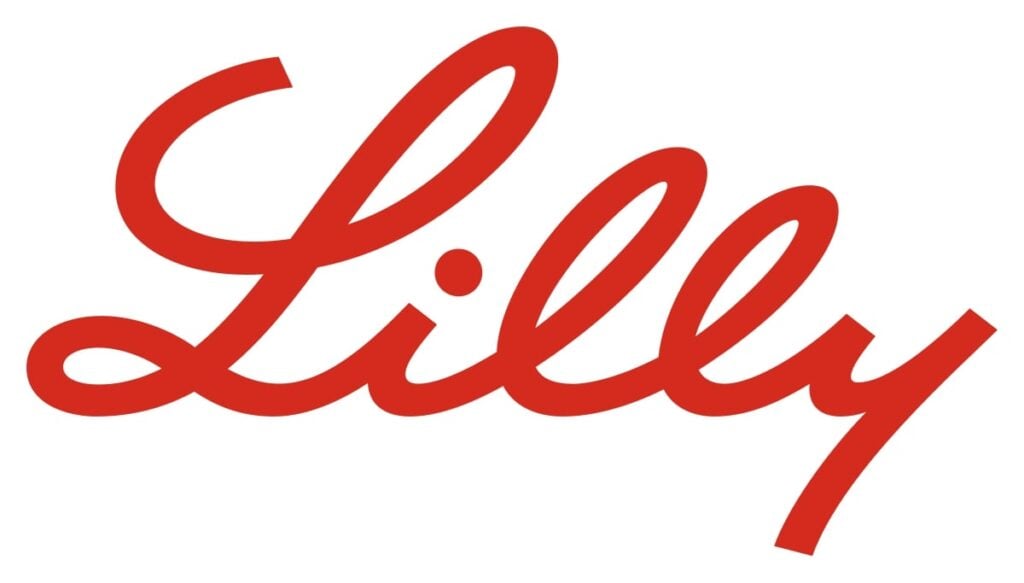
Therefore, you’re not chasing big swings but instead patiently collecting premiums as the stock quietly does its thing.
Growth Catalysts
There’s quiet power behind the calm. Strong product launches across diabetes and oncology, plus a growing presence in immunology, keep the earnings engine humming.
R&D investments are paying off with newer treatment approvals gaining traction.
That steady, innovation-fueled tailwind gives the stock a gentle drift upward over time, enough to nudge performance without jolting price outside your iron condor boundaries.
Risks
Still, even the most composed names have breaking points. Clinical trial disappointments or regulatory setbacks could spark sudden shifts.
Competition from generics or pricing pressure may trigger volatility, too.
Keeping an eye on FDA timelines and guidance makes a big difference. Iron condor traders should avoid entering around key data or earnings windows to steer clear of unwanted surprises.
Conclusion
If you like thoughtful setups built on innovation and stability, this fits the bill.
Eli Lilly brings growth without chaos, premium-rich environments, reliable ranges, and a fundamentally solid runway.
With smart timing and strategic strike placement, it’s a feature in any condor-focused strategy.
Procter & Gamble Co. (NYSE: PG)
Overview
PG feels like a seasoned marathoner, steady and dependable, rather than a sprinter. Its price tends to drift within a familiar range, which makes it one of the more predictable names for iron condor strategies.

For strategy traders selling time decay, PG’s calm demeanor offers peace of mind.
Growth Catalysts
The company is riding on strong brand equity, as icons like Tide, Pampers, and Pantene continue to deliver resilient consumer demand.
Margins are holding up well, even amid macro turbulence; recent quarterly results demonstrated that pricing discipline and operational resilience remain in place.
Analysts anticipate modest but steady sales and earnings growth, keeping expectations grounded and the price path predictable.
Risks
That steadiness can falter under unexpected strain.
Tariff changes, cost escalation in raw materials, or weak consumer sentiment could start to nudge the stock out of its range. Analyst sentiment is cautious, driven by tepid sales growth and uneven retail versus institutional flows.
Its faded price action and mixed money flow suggest the stock may continue to vacillate rather than offer clear direction.
Conclusion
PG won’t dazzle you with fireworks, but its steadiness is exactly what condor sellers appreciate.
A blend of reliable fundamentals, mild volatility, and solid brand strength makes it a go-to for income-focused traders looking to sleep well at night.
Just be mindful of cost or pricing shocks, and you’re in a good place.
UnitedHealth Group Incorporated (NYSE: UNH)
Overview
UnitedHealth feels like the dependable friend you can always count on, not flashy, but steady.
Its stock moves are typically well‑contained, especially outside earnings seasons, which makes it a strong candidate for iron condor strategies.

Its dual focus on insurance through UnitedHealthcare and healthcare services via Optum helps smooth out the ride, keeping moves quiet and manageable.
Growth Catalysts
The core strength comes from its healthcare and tech integrations that deliver consistent performance, not abrupt shifts.
UnitedHealthcare’s growing membership and better benefit delivery models work in tandem with Optum’s data‑driven health solutions to keep momentum modest but reliable.
That balanced growth supports steady, calm ranges—just the sort of behavior condor traders want.
Risks
That doesn’t mean it’s immune to surprises. Policy shifts, regulatory probes, or profit warnings can shake its price, especially with its high-profile exposure.
Healthcare policy changes or DOJ scrutiny could inject short-term volatility. And any unexpected quarterly slump can test your strike placement. Staying wary around earnings and news is a must.
Conclusion
If reliability and depth are your priorities, this is a solid pick. It blends stability with meaningful premium potential.
Just steer clear of earnings and regulatory headlines—and you’ll find UnitedHealth is a sturdy foundation for income‑focused iron condors.
Molson Coors Beverage Company (NYSE: TAP)
Overview
If calm and predictable is your kind of stock, there’s something comforting about how Molson Coors moves.
It has that subtle rhythm, rarely a rollercoaster, with its price wandering gently between familiar support and resistance zones.

And with solid option interest and decent liquidity (especially for a mid‑cap), it’s a reliable setup for defined‑risk trades.
Growth Catalysts
The company is leaning into premiumization and diversifying with hard seltzers and non‑alcoholic beverages, positioning itself well amid soft beer volumes.
Management’s focus on cost discipline, like trimmed capital expenditures and a $1.3 billion free cash flow target, signals resolve.
Plus, a near-complete $890 million share buyback from 2023 reflects confidence in long‑term value.
Risks
Of course, fragile consumer demand and stubborn input costs like aluminum inflation can put pressure on that stability.
Q1 2025 brought an 11% drop in revenue, and Q2 guidance shows continued softness. A big surprise or slippage in cash flow could shake the range and turn a smooth trade into a headache.
Conclusion
Molson Coors may not energize you with dramatic swings, but it’s precisely that measured pace that suits condor traders.
Its asset-light strategies and steady diversification offer enough under-the-radar momentum without breaking the range.
If you value peace of mind and disciplined income, it’s a quietly solid option.
McDonald’s Corporation (NYSE: MCD)
Overview
McDonald’s moves like a well-oiled machine, slow and steady, rarely surprising. That’s exactly why it’s a favorite for iron condor traders.
The stock typically drifts gently within defined ranges, giving premium decay a chance to do its work without sudden leaps or drops.

Growth Catalysts
Even in calm motion, momentum is at work. McDonald’s continues refining its menu with value-focused promotions and digital enhancements, whether it’s expanding app-driven ordering or testing creative marketing tie-ins.
Analysts note improved operating efficiency, along with steady cash flow trends that underpin confidence in the business.
These quiet but reliable drivers keep the stock on a gentle upward arc without disturbing the trading range.
Risks
Still, that relaxed volatility can crack if you’re not careful. Surprises, like soft traffic reports or softer-than-expected franchise numbers, can shift momentum.
Historical data shows post-earnings moves may lean slightly downward, with a median one-day drop of around 0.6 percent when surprises hit.
The key is avoiding tight entries around earnings or promotional cycles. Keep your wings aligned with the usual trading bands, and you’ll usually stay in control.
Conclusion
If you like steady and predictable, this is your match.
McDonald’s delivers a smooth ride with consistent fundamentals, strong liquidity, and low-volatility characteristics tailor-made for iron condor setups.
Stick to your tools—monitor earnings and technical levels, and this stock can deliver disciplined income with minimal drama.
AT&T Inc. (NYSE: T)
Overview
AT&T comes across like a no-frills commuter train: reliable, predictable, and often overlooked, but exactly what makes it a solid choice for iron condor sellers.
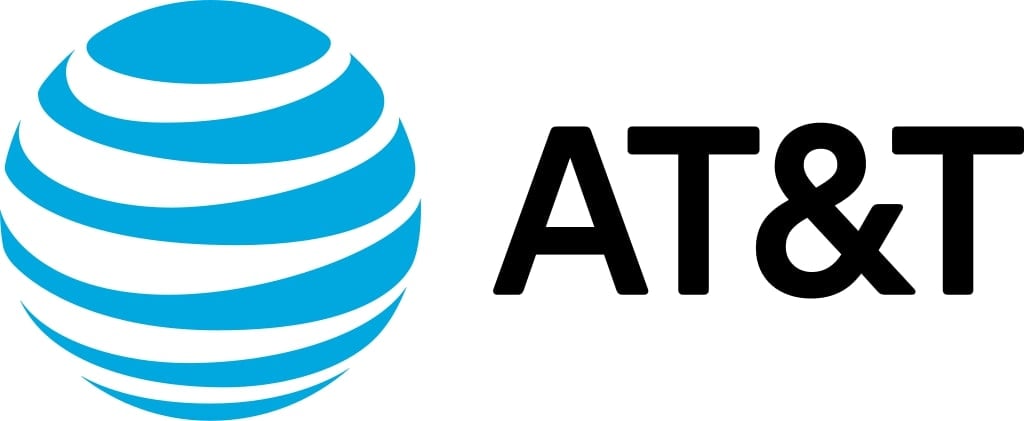
Combine that with steady options volume and tight spreads, and you get a backdrop that allows price decay to gently erode your short strikes without drama.
Growth Catalysts
Growth may feel subtle, but it’s real. AT&T’s investments in fiber infrastructure, 5G deployment, and its latest regional hub in Virginia highlight a focus on building capacity and future-proofing its network.
This kind of steady, structural improvement typically nudges the stock upward over time, without triggering sudden swings, perfect for range-bound strategies.
Risks
Even dependable trains can stall. Regulatory changes or unexpected earnings surprises could push AT&T out of its well-worn channel.
The telecom sector can be sensitive to macro pressures like interest rate shifts or changes in consumer wireless demand.
That means it’s wise to avoid entries around earnings or big announcements.
Conclusion
AT&T may lack flash, but that’s precisely why range traders value it. It delivers stability, liquid options, and low volatility, all helpful for setting up iron condors that decay comfortably and predictably.
Johnson & Johnson (NYSE: JNJ)
Overview
Johnson & Johnson moves like a steady heartbeat, regular, reliable, and rarely skips a beat.

With deep options liquidity and tight bid-ask spreads, it’s straightforward to manage multi-leg structures here.
Growth Catalysts
Growth might not be headline-grabbing, but it’s underpinned by strength.
The company’s broad healthcare exposure, from consumer health to medical devices, provides stability and pushes price forward gently.
Moderate growth, paired with low sensitivity to economic shifts, gives the stock a quiet upward bias, perfect for condor setups.
Risks
Even calm names can jitter. Litigation, regulatory changes, or public perception issues could suddenly disrupt the usual flow.
A weak earnings report or unexpected guidance may push the stock beyond its usual lanes, causing issues to condor setups.
That’s why it makes sense to be cautious around earnings and major announcements.
Conclusion
If you want a stock that feels like a safety net, steady, liquid, and quietly predictable, this is a strong contender.
J&J combines range reliability with efficient options markets, giving traders a comfortable environment to let iron condors work without much fuss.
What Makes a Good Iron Condor Stock?
Choosing the right stock is critical for a successful iron condor strategy. Here are the key factors to consider:
Low to Moderate Volatility
Stocks with low to moderate implied volatility (IV) are ideal. Too much volatility can cause the stock to break through your strike prices, resulting in losses.
Beta Close to 1 or Lower
Beta measures how much a stock moves compared to the market. Stocks with a beta around 1 or lower are generally more stable, which suits the iron condor strategy well.
High Liquidity
High liquidity ensures tighter bid-ask spreads for options. This means better entry and exit prices, reducing your trading costs.
Clear Price Ranges
Stocks that trade within predictable ranges are preferred. Stable price action helps the trade stay profitable until expiration.
How to Trade Iron Condors With Stocks
Trading iron condors is a strategy that demands practice, structure, and understanding of how markets work, especially when you’re trading around a stock, not an index.
Below are the most helpful ways to learn how to trade iron condors effectively using individual stocks.
Start With the Basics: Understand the Structure
Before you place your first trade, get familiar with what an iron condor actually involves.
At its core, it’s a neutral strategy that sells two credit spreads: a call spread and a put spread, both out of the money.
These spreads are built around the assumption that the stock will stay within a certain range through expiration.
It’s not just about profit potential. You’re managing risk, time, and movement. Take your time understanding how the legs of the trade work together.
Learn From Simulated Trading
One of the smartest moves you can make is to start in a paper trading account. Platforms like Thinkorswim (from TD Ameritrade), Tastytrade, and Interactive Brokers all let you simulate trades.
This gives you the chance to test different expiration dates, strike widths, and stock choices, without putting real money at risk.
You can watch how the iron condor behaves when volatility changes or when a stock starts to drift toward your short strikes.
Focus on Stock Behavior Over Time
Not all stocks are built the same. Some swing violently after earnings, while others barely move. Take time to track how your chosen stocks behave across weeks and months.
Are they range-bound? Do they gap on the news?
Understanding each stock’s rhythm helps you avoid surprises when you’re placing your condors.
Master the Role of Volatility
Implied volatility (IV) plays a huge role in iron condor pricing. Higher IV means you collect more premium, but it also means the stock is expected to move more.
That increases risk. Learn how to read IV Rank and IV Percentile, so you know whether you’re selling into high volatility (good for credit received) or low volatility (lower premium, but less movement).
Know When to Stay Out
Sometimes the best trade is no trade. Earnings weeks, product launches, and regulatory announcements can turn even the calmest stocks into rollercoasters.
Successful condor traders learn to stay away during those times. Focus on weeks when the calendar is quiet, and the stock’s technicals suggest consolidation.
Watch Real Traders in Action
Watching experienced traders walk through iron condor setups can help everything click.
YouTube channels like Tastytrade, Sky View Trading, or Option Alpha break down real trades with visuals.
You’ll learn how they pick strike prices, set profit targets, and manage adjustments when things don’t go as planned.
Practice Managing the Trade
Getting in is just part of the story. You also need to learn how to manage and exit.
Do you take profits early when most of the premium has decayed? What if the stock drifts toward one of your short strikes? What’s your plan to roll or adjust? Managing iron condors is where experienced traders separate themselves from beginners.
Track Every Trade and Journal Your Thoughts
Treat your learning process like a business. Every trade, whether it wins or loses, should teach you something.
Keep a log of entry dates, strike selection, why you chose the stock, how volatility looked, and how the trade played out. This habit builds insight that no course or video can give you.
Stay Consistent and Be Patient
It’s easy to get frustrated if your first few trades go sideways. But the key with iron condors is consistency.
Over time, with enough sample size, the probabilities work in your favor, assuming you stay disciplined with stock selection, strike distance, and risk management.
Don’t chase trades. Focus on quality setups that meet your criteria.
Iron Condor Stocks: Are They a Good Investment?
Iron condors are a strategy, not a buy‑and‑hold investment. As such, they’re best deployed in accounts where income strategies are permitted.
They work when volatility is moderate, price is consolidating, and there are no pending catalysts.
Unlike directional trades, success is tied to patience and discipline. These trades perform well over repeated cycles if carefully selected and managed.

FAQs
What Is the Iron Condor Strategy?
The iron condor strategy is an advanced options trading technique designed to profit from low volatility in the underlying stock. It involves selling one out-of-the-money call and one out-of-the-money put, while simultaneously buying a further out-of-the-money call and put, all with a matching expiration date.
This creates a net credit and sets up a range in which the trader hopes the underlying stock price will remain.
How Can Iron Condors Be Profitable?
Iron condors can be profitable when the underlying share price remains within the range of the short strikes at expiration. This allows all options to expire worthless, enabling the trader to keep the net credit received as profit. The key is to select stocks with low implied volatility and a stable price range.
What Risks Are Associated With Iron Condor Trades?
While iron condors have limited risk, there are still potential downsides. If the underlying stock price moves significantly beyond the strike prices of the options spreads, the trader can incur losses.
The maximum loss is limited to the difference between the strike prices of the spreads, minus the net credit received. Market volatility and unexpected price movements can also impact the success of this strategy.
How Does Implied Volatility Affect Iron Condor Strategies?
Implied volatility plays a crucial role in iron condor strategies. Lower implied volatility is preferable because it indicates that the stock is expected to have minimal price movements, which is ideal for this strategy.
Higher implied volatility suggests potential significant price swings, increasing the risk of the stock price breaching the strike prices and resulting in losses.
Can You Use Iron Condors in a Bear Market?
Yes, iron condors can be used in a bear market, but the trader must be cautious. In a bear market, stocks are more likely to experience significant downward movements, which can breach the lower strike prices of the put spreads. It’s essential to monitor market conditions closely and adjust positions as needed to manage risk effectively.
How Do Call Options Work in an Iron Condor?
In an iron condor, call options play a crucial role in creating the upper range of the strategy. The strategy involves selling an out-of-the-money call option (short call) and buying a further out-of-the-money call option (long call) with the same expiration date.
The difference between these strike prices forms the call spread. If the stock’s market price stays below the short call strike price, these options expire worthless, contributing to the overall profitability of the iron condor.
Conversely, if the market price rises above the short call strike, it can lead to losses, which are capped by the long call option.
Conclusion
Iron condors can be a dependable source of income when executed on the right stocks.
The 11 best iron condor stocks (U.S.-listed) featured here each bring qualities, steady ranges, liquidity, and manageable volatility that suit the strategy’s needs.
By focusing on IV rank, earnings calendars, and technical behavior, traders can create structured, repeatable setups that reward discipline.
Pair these picks with practice, proper sizing, and clear exit rules, and condors can earn while protecting capital.


 Tags:
Tags:










